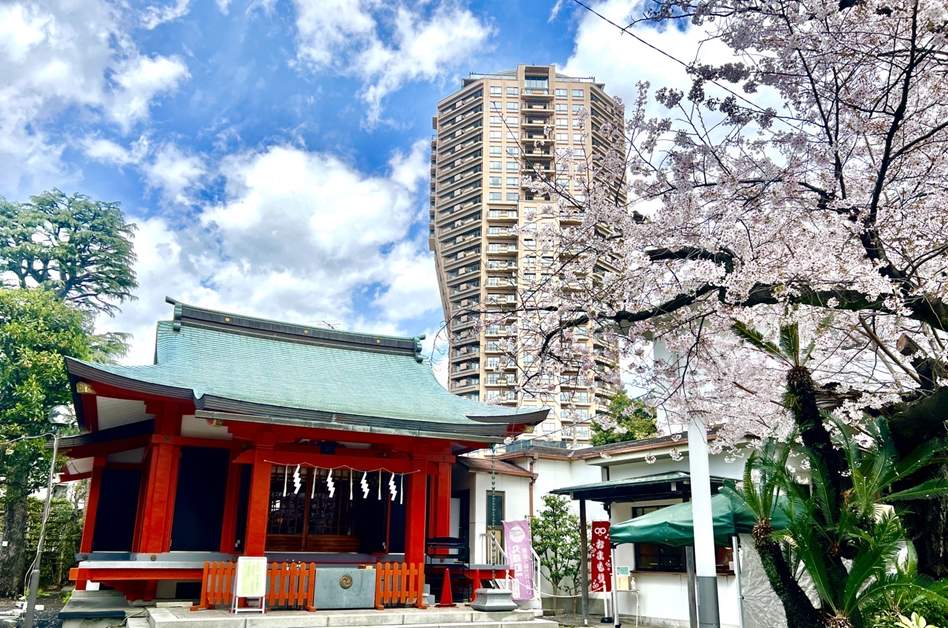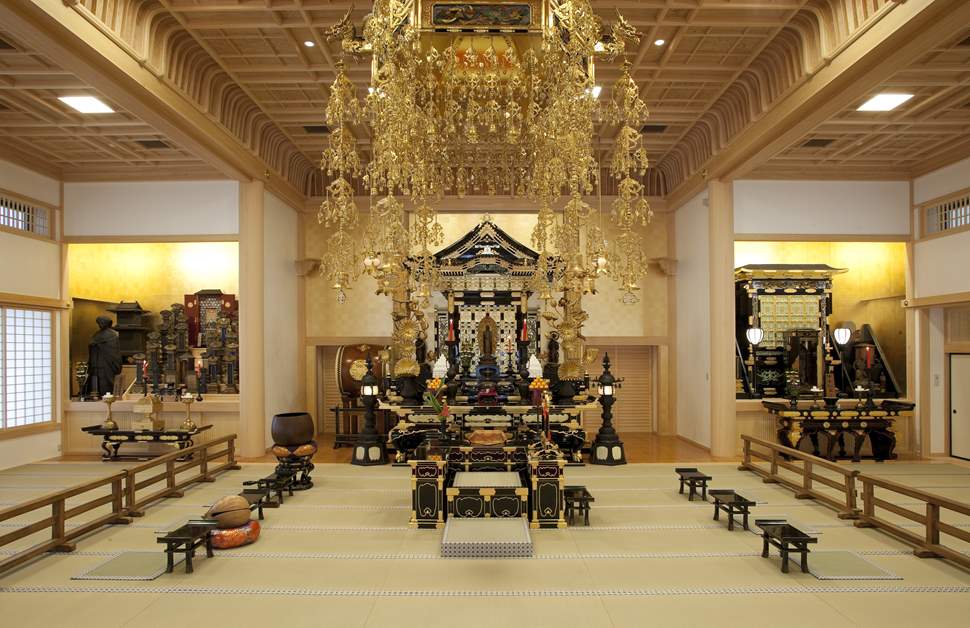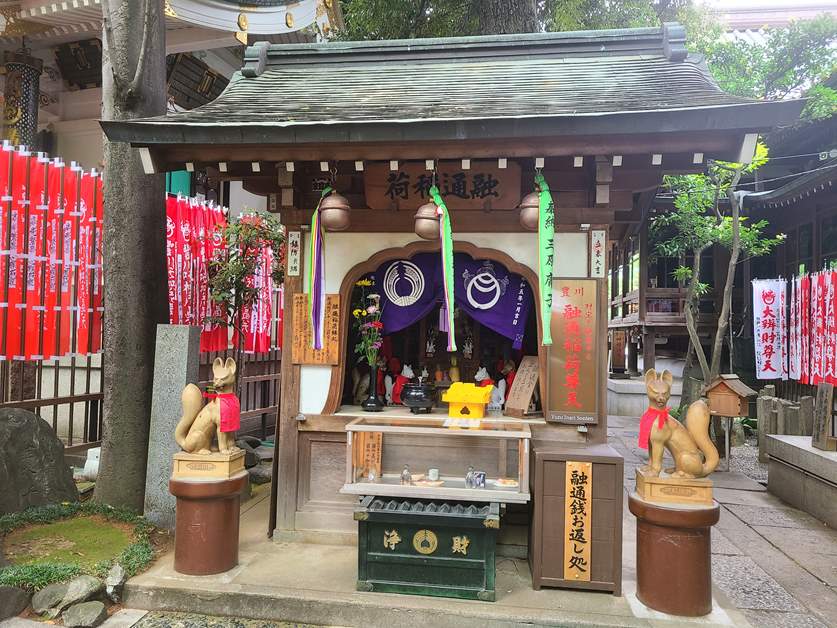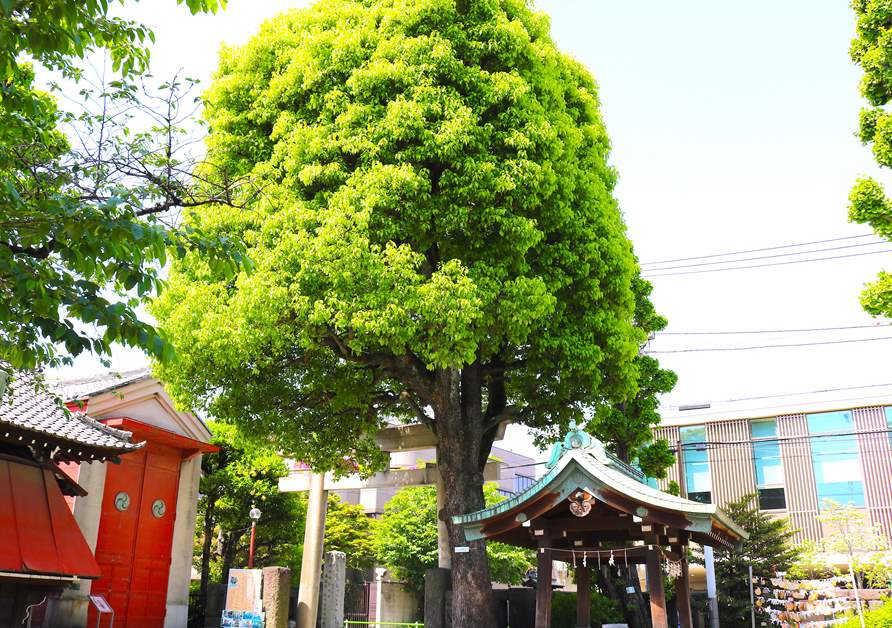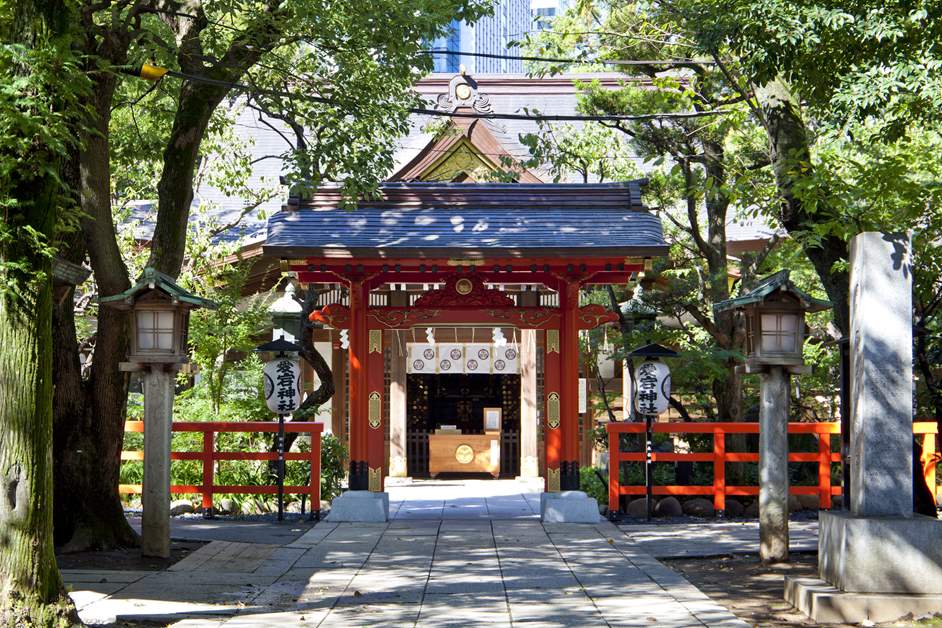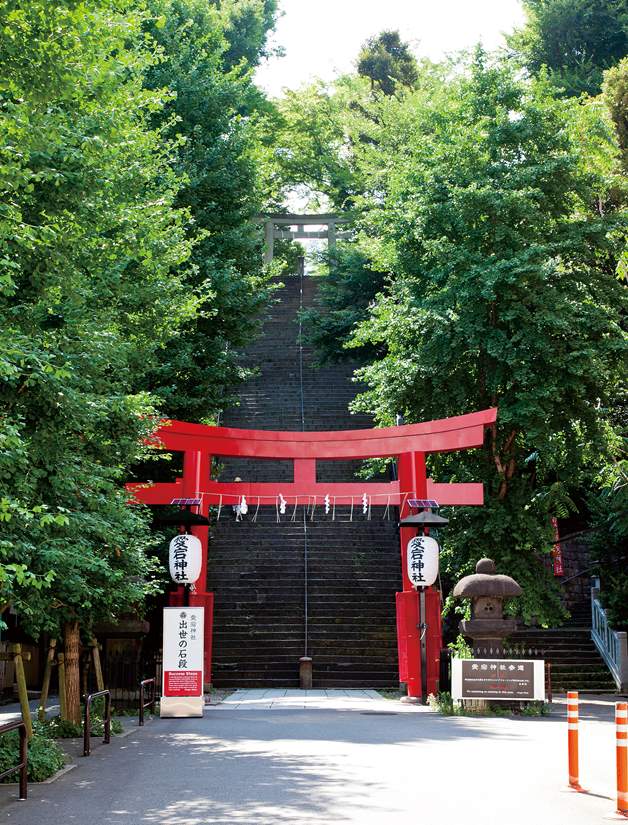Check out how to visit! How to visit power spot shrines and temples in Minato Ward
Shrines and temples are power spots where both Japanese and foreigners can experience the tradition and solemn atmosphere. If you go to the trouble of visiting them, you should know the proper way to pay your respects. In this issue, we will show you how to visit four shrines and temples in Minato Ward.
Differences between Shrine and Temple Ways of Prayer
Shrines and temples have different buildings and enshrined objects, and therefore different ways to visit them. Let's check out each.
●Temples
Temples have a "Sanmon" gate at the entrance, a "Pagoda" inside, and a "Kondo" where Buddhist statues are enshrined. When visiting the temple, bow with your palms in front of the gate and enter with your right foot. Do not step on the threshold. After offering money, it is customary to clasp your hands together in front of your chest, and do not clap your hands in a Kashiwa-mate gesture. You can see the Buddhist statues enshrined at the temple.
Temples for this visit: Zojoji Temple, Toyokawa Inari Tokyo Betsuin
● Shrines
There is a "Torii" at the entrance and a "Tezumisha" by the side of the approach. Proceeding to the back of the shrine, you will find the "Honden (main hall)" where the deity is enshrined. When passing through the torii gate, it is good manners to bow before passing through the edge of the gate, avoiding the center of the gate, which is the path of the gods. As you proceed along the approach, you will see a hand-watering basin, so purify your hands. When visiting the main shrine, after offering money, bow ""Nirei Ni-ni-hate-ichirii"" (two rounds of applause and one round of bow). In other words, bow twice, clap your hands twice, and bow once at the end. Unlike temples, shrines enshrine the sacred object in a place that cannot be seen from the outside.
Shrines visited this time: Azabu Hikawa Shrine and Atago Shrine.
●Temples
Temples have a "Sanmon" gate at the entrance, a "Pagoda" inside, and a "Kondo" where Buddhist statues are enshrined. When visiting the temple, bow with your palms in front of the gate and enter with your right foot. Do not step on the threshold. After offering money, it is customary to clasp your hands together in front of your chest, and do not clap your hands in a Kashiwa-mate gesture. You can see the Buddhist statues enshrined at the temple.
Temples for this visit: Zojoji Temple, Toyokawa Inari Tokyo Betsuin
● Shrines
There is a "Torii" at the entrance and a "Tezumisha" by the side of the approach. Proceeding to the back of the shrine, you will find the "Honden (main hall)" where the deity is enshrined. When passing through the torii gate, it is good manners to bow before passing through the edge of the gate, avoiding the center of the gate, which is the path of the gods. As you proceed along the approach, you will see a hand-watering basin, so purify your hands. When visiting the main shrine, after offering money, bow ""Nirei Ni-ni-hate-ichirii"" (two rounds of applause and one round of bow). In other words, bow twice, clap your hands twice, and bow once at the end. Unlike temples, shrines enshrine the sacred object in a place that cannot be seen from the outside.
Shrines visited this time: Azabu Hikawa Shrine and Atago Shrine.
Zojoji Temple overlooking Tokyo Tower
Zojoji Temple, located in Shiba, is a 600-year-old temple of the Jodo sect of Buddhism associated with Ieyasu Tokugawa. Shiba Park and Tokyo Tower are just a few steps away, so you can visit the temple while peering over the Tokyo Tower from anywhere. The black main image of Zojoji Temple is known as the Buddha who invites good luck and avoids calamities.
The main hall of the temple is undergoing earthquake-proofing work until August 2023, so visitors are advised to visit the Ankoku-den Hall during this period.
The main hall of the temple is undergoing earthquake-proofing work until August 2023, so visitors are advised to visit the Ankoku-den Hall during this period.
Inside the Ankokuden. Enshrined in the kitchen in the center of the main hall is Kuromoto
"Ankoku-den" was the building that was considered as the main hall in place of the Daiden, which was lost in the war and moved to the north side of the temple grounds in 1974, thus the name. 2011 saw the erection of the new and current Ankoku-den. Enshrined in the center of the main hall is the principal image, the Kurohonzon. The shrine is open on New Year's Day and the 15th day of May and September. It is said that Tokugawa Ieyasu gained victory in battle through the blessings of this statue. Why not ask for good luck and protection against misfortune?
Nembutsu is important in the Jodo sect, so please put your hands together in front of the principal image and recite the nembutsu ten times (ojunen). In 2011, the new Ankoku-den was built. Enshrined in the center of the main hall is the principal image, the Kurohonzon. The shrine is open on New Year's Day and the 15th day of May and September. It is said that Tokugawa Ieyasu gained victory in battle through the blessings of this statue. Why not ask for good luck and protection against misfortune?
Since the Jodo sect places great importance on nembutsu (the recitation of the Buddhist prayer), please join hands and recite the nembutsu ten times (onenen) in front of the principal image of the Buddha.
Nembutsu is important in the Jodo sect, so please put your hands together in front of the principal image and recite the nembutsu ten times (ojunen). In 2011, the new Ankoku-den was built. Enshrined in the center of the main hall is the principal image, the Kurohonzon. The shrine is open on New Year's Day and the 15th day of May and September. It is said that Tokugawa Ieyasu gained victory in battle through the blessings of this statue. Why not ask for good luck and protection against misfortune?
Since the Jodo sect places great importance on nembutsu (the recitation of the Buddhist prayer), please join hands and recite the nembutsu ten times (onenen) in front of the principal image of the Buddha.
Toyokawa Inari Tokyo Betsuin where you can visit the Seven Gods of Good Fortune in the precincts of the temple.
Toyokawa Inari Tokyo Betsuin in Akasaka is a Soto sect temple known for its many foxes. Although the word ""Inari"" tends to make people think it is a shrine, its official name is TOYOKAWAKAKU MYOGONJI, and the temple is dedicated to a Buddha named Fengkawa Nikkourini Maiten (豐川吒枳尼眞天).
Toyokawa Inari was worshipped by warlords such as Yoshimoto Imagawa, Nobunaga Oda, Hideyoshi Toyotomi, and Ieyasu Tokugawa in ancient times, and during the Edo period, it was believed to be beneficial to the common people for prosperous business, family safety, and good fortune and luck. The Tokyo Annex enshrines the spirit of Toyokawa Inari, which was worshipped by Ooka Echizen-no-Kami Tadasuke, a feudal lord in the Edo period. In 1887, the temple was relocated from the Ooka residence in Akasaka Hitotsugi to its current location and became a branch temple under the direct control of the Toyokawa Kaku of Aichi Prefecture.
Toyokawa Inari was worshipped by warlords such as Yoshimoto Imagawa, Nobunaga Oda, Hideyoshi Toyotomi, and Ieyasu Tokugawa in ancient times, and during the Edo period, it was believed to be beneficial to the common people for prosperous business, family safety, and good fortune and luck. The Tokyo Annex enshrines the spirit of Toyokawa Inari, which was worshipped by Ooka Echizen-no-Kami Tadasuke, a feudal lord in the Edo period. In 1887, the temple was relocated from the Ooka residence in Akasaka Hitotsugi to its current location and became a branch temple under the direct control of the Toyokawa Kaku of Aichi Prefecture.
Flexible Inari
We recommend that you first visit the main shrine and then walk around the temple grounds. The "Yutsu Inari" on the left side of the main shrine is said to offer financial support. The "Kanoinari" located behind it is a guardian deity to prevent divorce and other misfortunes.
Daikokuten
In addition, visitors can make the Seven Deities of Good Fortune tour in the precincts of the temple alone. Follow the route and visit Ebisuten and Daikokuten. In addition, there are various other spots within the lush green precincts of the temple, so why not pay a visit according to your preference?
Azabu Hikawa Shrine, where you can get power from camphor trees and pine trees
Azabu Hikawa Shrine, located in Azabu Juban, is a shrine with a history of over 1,000 years, known for its sacred camphor trees and pine trees. It was founded in the mid-Heian period in 938 by Minamoto no Tsunemoto, the founder of the Seiwa Minamoto clan. The miyadai mikoshi, which features many of Edo's splendid craftsmanship in the mikoshi storehouse, is one of the best in the Kanto region. It is also known as the model shrine for the anime "Sailor Moon," which has become a social phenomenon and attracts tourists from Japan and abroad as a sacred site.
Ōkusunoki of the sacred tree
After passing through the Otorii gate and worshipping at the main shrine and Inari Shrine, you can recharge your power under the sacred camphor tree at the end of your visit. The crown pine tree, Ipponmatsu, and a stone monument are also recommended on the Ipponmatsu Slope, which climbs up from Azabu Juban.
In addition, the guardian dogs facing each other to ward off evil spirits are symbols that have guarded the shrine since the Edo period (1603-1868). Let us ask for peace and good karma. When praying to Bishamonten in the main shrine, try to make a wish three times silently in your heart. It should bring you good luck. There is a pleasant air in the precincts of the temple, so take three quiet, slow, deep breaths.
In addition, the guardian dogs facing each other to ward off evil spirits are symbols that have guarded the shrine since the Edo period (1603-1868). Let us ask for peace and good karma. When praying to Bishamonten in the main shrine, try to make a wish three times silently in your heart. It should bring you good luck. There is a pleasant air in the precincts of the temple, so take three quiet, slow, deep breaths.
Atago Shrine with deep greenery at the end of long stone steps
Atago Shrine, located at the top of Mt. Atago, is known for its long stone steps and dense greenery. The shrine was built in 1603 by Tokugawa Ieyasu, the founder of the Edo shogunate, as a god to protect the city from fire. The main deity is Homusubi no Mikoto, the god of fire, and the shrine also enshrines Katsugun Jizo Bosatsu, which Ieyasu dedicated to the god when he took over the country.
The stone steps in front of the company, called the stone steps of advancement
There is an episode in which Heikuro Magaki, a warrior of the Marugame domain in Shikoku, rode his horse up and down the stone steps in front of Atago Shrine in the presence of the third shogun, Iemitsu, and was praised by the shogun as a ""master of horsemanship"". Since then, the stone steps have been called ""the stone steps of success,"" and have appeared in stories and novels, attracting endless numbers of visitors who come to pray in the hope of being rewarded for their efforts.
Atago-yama, where Atago Shrine is located, is the highest natural mountain in the 23 wards of Tokyo. After climbing the long stone steps, you will reach an urban oasis with lush foliage that changes with the seasons. Take a deep breath, quiet your mind, and pay a visit.
Atago-yama, where Atago Shrine is located, is the highest natural mountain in the 23 wards of Tokyo. After climbing the long stone steps, you will reach an urban oasis with lush foliage that changes with the seasons. Take a deep breath, quiet your mind, and pay a visit.
Shrines and temples that are also power spots in Minato Ward had a fine history. If you know how to visit them, you will be able to visit them comfortably. Please go out and make a request or a vow to Buddha or God.




